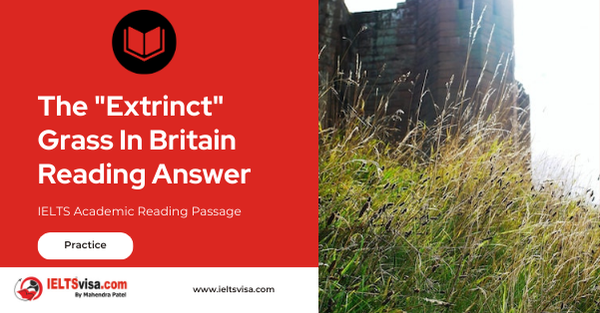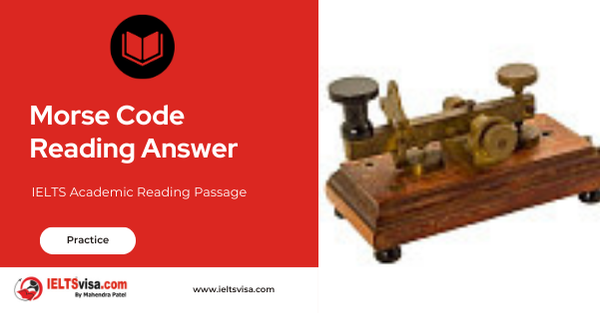Bramley College International Scholarships Reading Answer
IELTS General Reading Passage
There are seven types of scholarship offered by Bramley College to enrolled international students to assist with the costs of their courses. With the exception of applications for scholarship category E, all newly-enrolled international students are automatically considered for these scholarships. The scholarship is awarded in the student’s first year as a credit to second semester course fees. In all subsequent years, the scholarship is awarded as a credit to first semester course fees. The scholarships are awarded once per year unless otherwise stated.
The scholarship categories are:
|
A |
One scholarship of A$2000 for the most outstanding students entering the Foundation Studies Program from each of the following countries: Singapore, Malaysia and Thailand. An additional six scholarships are available for students from other countries. These scholarships are offered on two dates, to students in the March and June intakes of the program. Scholarships are awarded on the basis of first semester results. |
|
|
|
|
B |
Three scholarships providing 25% of course fees for the duration of the course to the three most outstanding State Certificate of Education (SCE) students entering a Diploma or Certificate program. Scholarships are awarded on the basis of the previous year’s SCE results. |
|
|
|
|
C |
Seventeen scholarships providing 25% of course fees for the duration of the course to outstanding Diploma or Certificate students entering each Bramley College School: three each in the Schools of Business and Engineering; two in the School of Applied Science; two in the School of Environmental Design and Construction; two in the School of Art and Design; two in the School of Social Sciences and Communications; one in the School of Biomedical and Health Science; one in the School of Education and one in the School of Nursing. Scholarships are awarded on the basis of first semester results. |
|
|
|
|
D |
One scholarship of A$4000 per annum for the duration of the course to the most outstanding student entering the Diploma in Communication. Scholarships are awarded on the basis of first semester results. |
|
|
|
|
E |
Nine scholarships of A$3000 per annum for the duration of the course to the most outstanding students commencing any Advanced Certificate course. Scholarships are awarded on the basis of Basic Certificate results (not SCE results). Note that applicants need to apply for this scholarship on the Bramley College International Scholarship Application Form. |
|
|
|
|
F |
One full-fee scholarship to the most outstanding student commencing a Diploma in Art and Design (Photography) course. This scholarship is offered every second year, and is awarded on the basis of results obtained in the Certificate in Design course. |
|
|
|
|
G |
Four half-fee scholarships to outstanding students of Bramley College’s Singapore campus for the final year of the two-year Certificate in Business Studies to be completed in Melbourne, Australia. Scholarships are awarded on the basis of first year results. |
Questions 1-7
Reading Passage has six sections, A-G.
Which paragraph contains the following information?
Write the correct letter A-G in boxes 1-7 on your answer sheet.
NB You may use any letter more than once
- It is awarded on results obtained in the SCE
- It is only available to students from the College’s overseas
- It is not offered every
- Students need to apply for
- It is offered twice each
- It pays 100% of the student’s tuition
- It provides 50% of one year’s

Solution:Bramley College International Scholarships Reading Answer
| 1. B | 5. A |
| 2. G | 6. F |
| 3. F | 7. G |
| 4. E |
Review and Practice
- Regularly practice with IELTS reading samples and time yourself to get used to the pressure of the exam.
- Review your mistakes to understand where you went wrong and how to avoid similar errors in the future.
Our Books
Master IELTS Speaking Part 1
IELTS Writing Task 1 Book
IELTS Writing Task 2 Book
Bramley College International Scholarships Reading Answer Explanation
Comin Soon
Practice IELTS Other Modules
IELTS Listening
The IELTS Listening test assesses how well you can understand spoken English in various contexts. It lasts about 30 minutes and is divided into four sections with a total of 40 questions. The listening tasks become increasingly difficult as the test progresses.
IELTS Academic Reading
The IELTS Academic Reading section assesses your ability to understand and interpret a variety of texts in academic settings. It is designed to evaluate a range of reading skills, including skimming for gist, reading for main ideas, reading for detail, understanding inferences, and recognizing a writer's opinions and arguments.
IELTS Speaking
The IELTS Speaking test assesses your ability to communicate in English on everyday topics. It lasts 11-14 minutes and consists of three parts: introduction, cue card, and a discussion based on the cue card topic.
IELTS General Reading
IELTS General Reading tests your ability to understand and interpret various types of texts. Here are some key areas and types of content you can expect to encounter in the reading section, along with tips for effective preparation.
IELTS Academic Writing Task 1
In IELTS Academic Writing Task 1, you are presented with a visual representation of information, such as graphs, charts, tables, or diagrams, and you are required to summarize, compare, or explain the data in your own words.
IELTS General Writing Task 1
In IELTS General Writing Task 1, you are required to write a letter based on a given situation. The letter can be formal, semi-formal, or informal, depending on the prompt. Here’s a breakdown of the key components to include in your letter
IELTS Academic Writing Task 2
In IELTS Academic Writing Task 2, you are required to write an essay in response to a question or topic. Here’s a guide to help you understand the essential elements of this task
IELTS Exam Tips
To succeed in the IELTS exam, practice regularly, familiarize yourself with the test format, improve your vocabulary, develop time management skills, and take mock tests to build confidence.
Grammer for IELTS
Grammar is the foundation of effective communication in English. Understanding tense usage, subject-verb agreement, and sentence structure enhances clarity and coherence in writing and speaking.
Vocabulary for IELTS
Vocabulary plays a crucial role in the IELTS (International English Language Testing System) exam, especially in the Speaking and Writing sections. Here’s an overview of why vocabulary is important and how it impacts your performance
RECENT IELTS SAMPLES QUESTIONS AND ANSWERS
The Life And work Of Marie Curie Reading Answer
Marie Curie is probably the most famous woman scientist who has ever lived. Born Maria...
Becoming An Expert Reading Answer
A Expertise is commitment coupled with creativity. Specifically, it is the commitment of...
STUDY CENTRE COURSES Reading Answer
SELF-STUDY TIPS AHowever difficult you find it to arrange your time, it will pay off in the...
The Extrinct Grass In Britain Reading Answer
A The British grass interrupted brome was said to be extinct, just like the Dodo. Called...
Morse Code Reading Answer
A. A new satellite-based system is being implemented to replace Morse code for sending...
Magnetic Therapy Reading Answer
AMagnetic therapy, which is a $5-billion market worldwide, is a form of alternative medicine...













